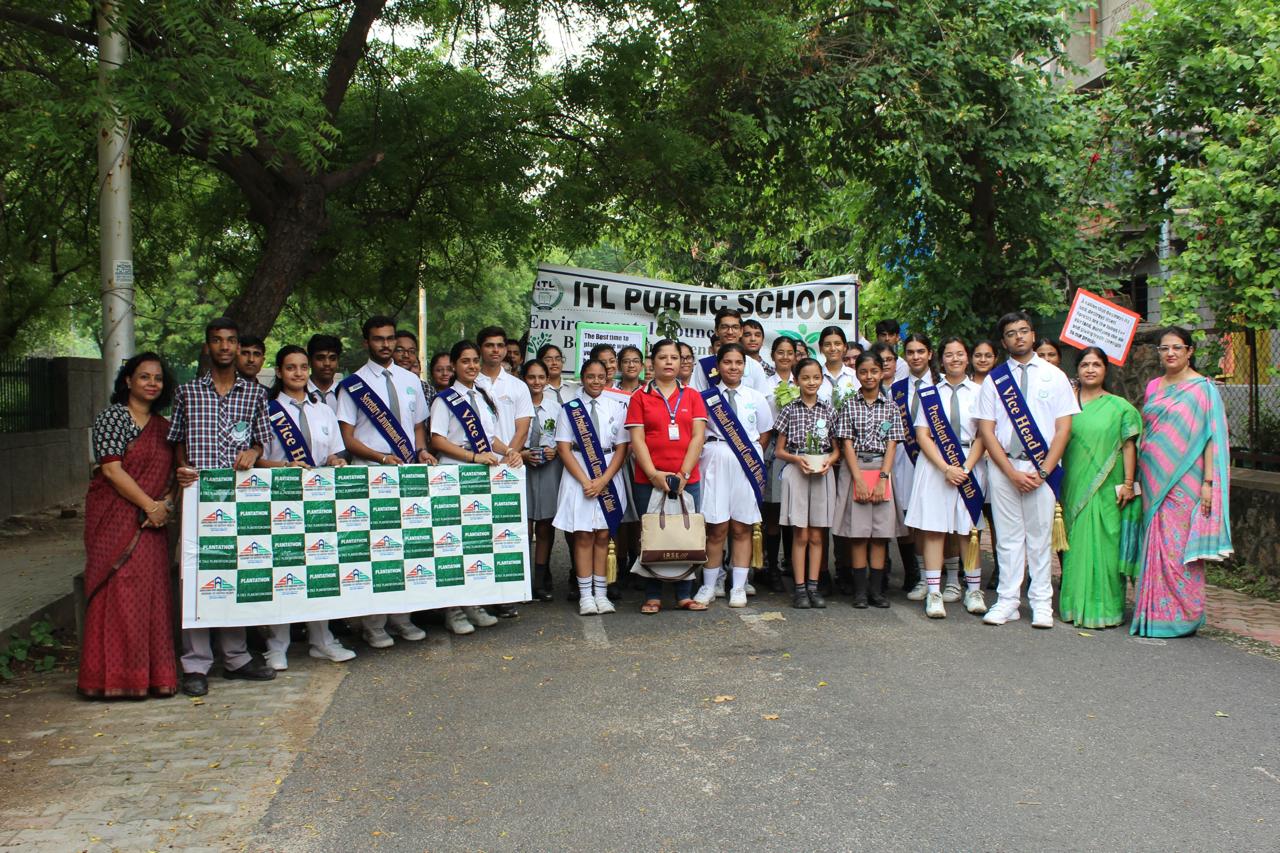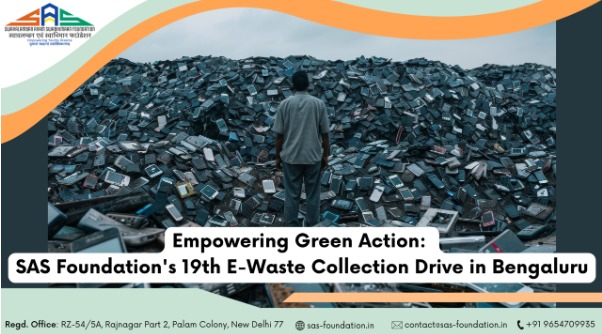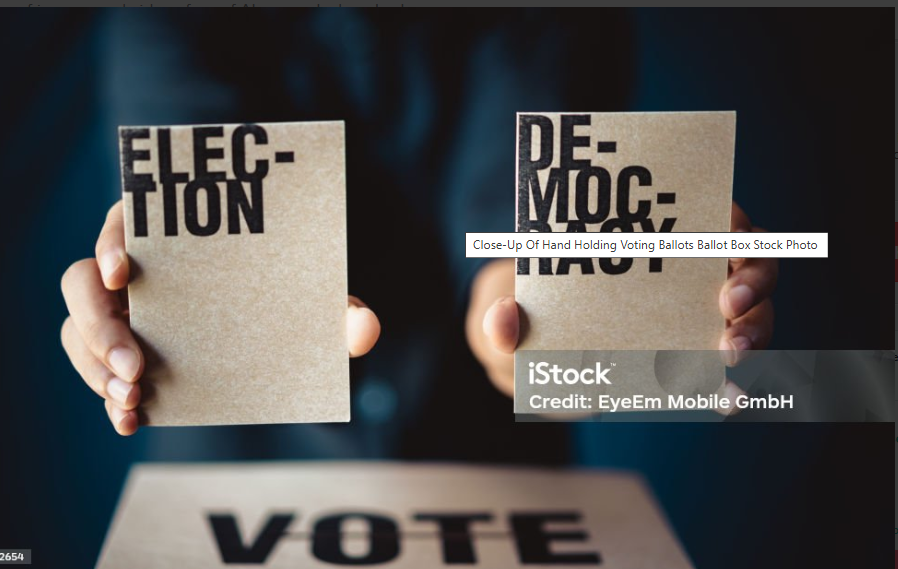Organizing Impactful E-Waste Collection Drives: A Step-by-Step Guide for a Cleaner Planet
E-waste, or electronic waste, is one of the fastest-growing waste streams globally. From discarded mobile phones and old laptops to broken chargers and outdated household appliances, our dependence on electronics has led to an alarming rise in electronic waste. According to the Global E-Waste Monitor, the world generated 59.4 million metric tonnes of e-waste in 2022—only 17.4% of which was properly collected and recycled.
At Swavalamban Avam Swabhimaan Foundation (SAS Foundation), we believe change begins at the grassroots. Our first e-waste collection drive in Noida marked a powerful start—with 2,297 kg of e-waste collected, propelling us closer to our 3-tonne annual target. Now, we want to empower you to launch your own e-waste collection initiatives—whether in your school, college, neighborhood, or workplace.
Here’s a comprehensive guide to help you organize an impactful e-waste drive and contribute to building a greener, cleaner, and more circular economy.
1. Understand the E-Waste Crisis
Before launching your drive, it’s important to understand what qualifies as e-waste and why it matters. E-waste includes any discarded electrical or electronic devices: mobile phones, computers, televisions, batteries, cables, routers, and even electronic toys.
Improper disposal of e-waste poses serious risks:
- Environmental contamination: Toxic substances like mercury, lead, and cadmium leak into soil and groundwater.
- Human health hazards: Informal recyclers, often children, face exposure to carcinogenic compounds.
- Loss of precious resources: Rare metals like gold, palladium, and cobalt are lost when devices aren’t properly recycled.
By organizing a local e-waste drive, you’re not just reducing pollution—you’re also helping recover valuable materials and reducing the demand for mining.
2. Set Clear Goals and Define Impact
Every effective initiative starts with clear goals. Consider:
- Target weight of e-waste to be collected (e.g., 500 kg in one month).
- Number of participants or households you aim to involve.
- Awareness benchmarks, such as number of social media shares or in-person attendees at workshops.
When you quantify your goals, it becomes easier to track success and celebrate progress.
3. Partner with Certified E-Waste Recyclers
Always ensure that collected e-waste goes to an authorized and responsible recycler. In India, organizations must be certified by the Central Pollution Control Board (CPCB) to process e-waste legally and safely.
Reach out to certified recyclers in your city who can:
- Provide e-waste bins or storage units.
- Arrange pickups.
- Issue certificates of recycling for accountability and transparency.
4. Build a Core Team and Assign Roles
Divide responsibilities among volunteers or colleagues:
- Outreach team to promote the drive.
- Logistics team to manage collection points and storage.
- Documentation team to photograph, record data, and write post-event reports.
Working with a passionate, organized team ensures efficiency and enthusiasm.
5. Select Strategic Collection Points
Choose easily accessible, high-visibility spots such as:
- Schools and colleges.
- Community centers.
- Housing societies.
- Local NGOs or libraries.
Ensure all collection points are safe, clearly labeled, and monitored to prevent misuse or vandalism.
6. Create Awareness with Targeted Campaigns
The success of any collection drive lies in how well it’s communicated. Use both online and offline channels:
- Social media: Instagram reels, LinkedIn posts, and Facebook stories.
- Posters and flyers in local markets and schools.
- Workshops and seminars in collaboration with environmental clubs.
- Emails and WhatsApp groups to reach families and employees.
Educate the community about:
- The types of devices they can discard.
- The environmental risks of improper disposal.
- How e-waste recycling supports a circular economy.
7. Include an Educational Component
Every drive should inspire long-term behavior change. Consider adding:
- Short talks on sustainability and waste segregation.
- Demonstrations on disassembling devices for recovery.
- Infographics showing e-waste’s lifecycle.
You can also invite local environmental experts or NGOs to speak about the broader climate impacts of electronic overconsumption.
8. Engage Youth and Families
Schools and colleges are the perfect venues to start the culture of responsible e-waste disposal. Organize:
- Competitions: Poster-making, short films, and debates on e-waste.
- Family recycling challenges: Reward the households that bring in the most devices.
- Certificates of participation for students to recognize their contribution.
Young minds are powerful agents of change—they take lessons home and influence future habits.
9. Document, Celebrate & Share the Impact
Keep track of:
- Total weight of e-waste collected.
- Types of devices collected.
- Number of participants.
- Hours spent volunteering.
Share these stats through blog posts, press releases, or newsletters. Celebrate the contributors and recognize star volunteers. You can even share the recyclers’ impact reports to demonstrate credibility and closure.
SAS Foundation’s drive in Noida, for instance, was widely shared across social media, inspiring other cities and schools to plan similar initiatives.
10. Make it a Recurring Effort
The first drive is just the beginning. To make a lasting difference:
- Plan quarterly or biannual drives.
- Build a permanent e-waste bin system at your location.
- Partner with tech companies and local governments for larger outreach.
Encourage ongoing conversations and keep your community engaged through newsletters and update posts.
Conclusion: Every Small Action Counts
The e-waste crisis may seem overwhelming, but the solution begins with local action. Your discarded phone or broken keyboard might not look like much—but when collected responsibly, it becomes part of a global effort to reduce waste, conserve resources, and protect the planet.
Swavalamban Avam Swabhimaan Foundation (SAS Foundation) is proud to lead such efforts and partner with individuals and institutions who share our vision for a greener, cleaner, and more circular future.
🔁 Ready to launch your own e-waste collection drive?
📩 Subscribe to our newsletter for toolkits, tips, and inspirational stories: https://lnkd.in/gfeaFC2v
Let’s make every discarded device a step toward sustainability. 🌿💻🌍
Keywords: e-waste collection, e-waste recycling, sustainable practices, e-waste awareness, environmental initiatives, community engagement, green technology, circular economy, waste management










